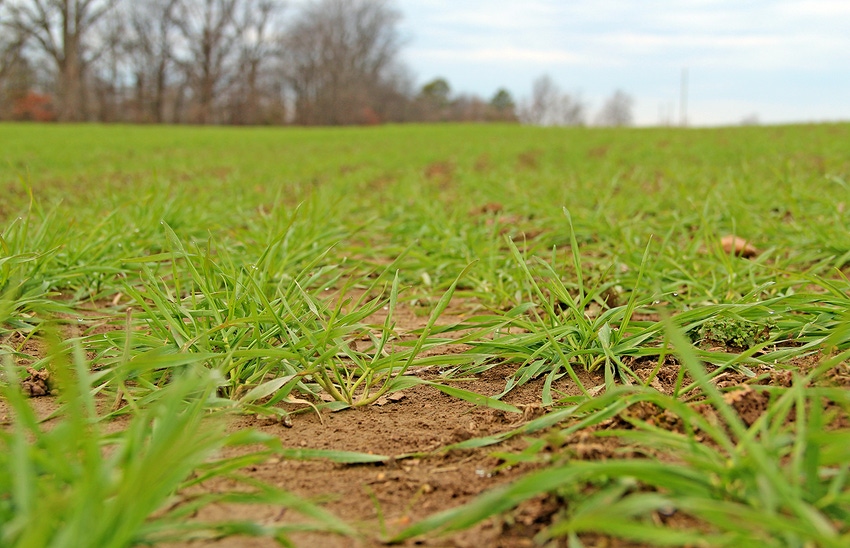October 6, 2015

For about four years my wheat weed control program has been focused on pyroxasulfone, the only new product for ryegrass control to come along since the introduction of the ALS herbicides Osprey and Power Flex around 10 years ago.
Pyroxasulfone is the active ingredient in Zidua and Anthem Flex in wheat and is also found in several soybean and corn premixes. It controls annual ryegrass very well when applied prior to ryegrass germination.
The only problem is that some injury issues have popped up in wheat over the past couple of years that have limited both the Zidua and Anthem Flex labels to delayed pre or early post applications only.
While better than nothing, these applications are prone to allow ryegrass to germinate and a true pre would be much more beneficial in terms of early-season ryegrass control.
So, why no pre label? For several years — at least the first three — that we looked at Anthem Flex/ Zidua, we did not see any injury from pre applications. Then it was pointed out that there appeared to be some varietal tolerance issues and for some time we tried to quantify this to come up with a list of tolerant and susceptible varieties of wheat to pyroxasulfone. But our results were erratic.
This led me to believe that tolerance was not so much based on genetics but rather wheat seed vigor and timing of rainfall. In addition, I believe that planting depth, soil type and rate also play a major role.
A few varieties such as Terrell 8861 and Armor’s Richochet seemed to be very susceptible. Others, like most Delta Gro and Pioneer varieties, seemed tolerant. Then some were in the middle and were okay most of the time, like the AGS variety 2060. But before you call, there is no list! Every time we thought we knew something for sure, we would get a surprise and a “tolerant” variety would come up with some injury or vice versa.
For the vast majority of trials and varieties the injury that I am talking about amounted to around 10 to 15 percent stunting and stand loss. The wheat usually recovered in as little as four to six weeks and the ryegrass control was exceptional. That’s what led to the labeling of pyroxasulfone as only delayed pre or post.
It has worked well in a tank-mix early post with Axial XL when applied to 3-to 4-leaf ryegrass or with Axiom applied in the spring on 1- to 2-leaf wheat followed by Axial XL in the spring.
The problem with this is the ryegrass that is coming through at planting time and might have been controlled with a pre application is being controlled by Axial Xl, a herbicide to which we have documented ryegrass resistance already.
A true pre application of Anthem Flex/Zidua would be more valuable for resistance management than the current delayed pre or post.
This fall FMC Corporation decided to support the expansion of the Anthem Flex label, with a special state label, currently in Arkansas, for a true pre application of Anthem Flex in wheat. This 24c went into effect on Oct. 5 and is good for the next few years, pending any problems. The label is for drill-seeded wheat only and has specific recommendations on planting depth (from 0.5 to 1.5 inches) and warnings about injury potential, but there is no variety list.
I know some of you have experimented with pre applications of this active already. Keep in mind that dry conditions followed by a heavy rain after planting could be a recipe for injury, and that has been our weather pattern this year. I would not use Anthem Flex on “dusted in” wheat, unless you are getting into some moisture for germination before a rain.
The Anthem Flex 24C is an indemnified label. That is, FMC accepts no responsibility for crop injury. You can find the label at FMC’s website or at the Arkansas State Plant Board website.
My wheat weed control program has been sponsored for several years by the Arkansas Wheat Promotion Board and various industry grants. Without this combined support and cooperation we would not be able to provide Arkansas wheat growers with a battle plan for resistant ryegrass or work or the development of 24C labels such as the one discussed here. This support is greatly appreciated
You May Also Like




